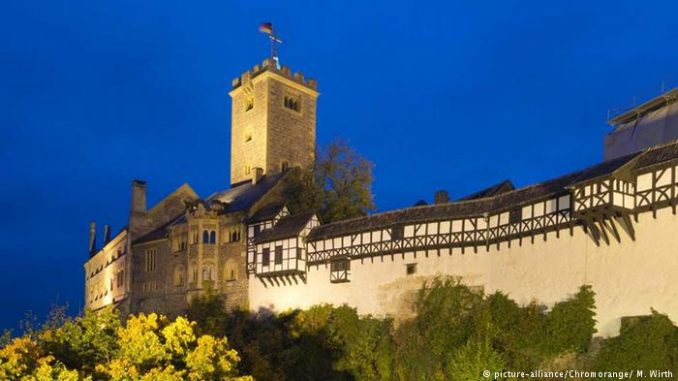
One thousand years old and a UNESCO World Heritage Site, Wartburg Castle in Thuringia is associated with many historical events. The most famous of these deals with an infamous ink stain – and Martin Luther.
In 1521/22, reformer Martin Luther had to spend a year at Wartburg Castle, but not by choice. It proved to be a very productive period for him. Four years earlier he had published his “Ninety-five Theses”, also known as the “Disputation on the Power of Indulgences,” demanding a reform within the Catholic Church.
Luther’s ideas were so radical that the Diet of Worms declared him an outlaw – meaning that all legal protection was withdrawn from him, making it possible for anyone to murder Luther without fear of prosecution. In order to avoid such a tragic fate, Frederick III, Elector of Saxony, organized a staged kidnapping of Martin Luther, as he returned to Wittenberg from Worms. The trick worked: most people thought the reformer was dead. Artists Albrecht Dürer even lamented what other works this Luther could have written if he had lived on. Little did he know…
The person everyone thought dead was actually at Wartburg Castle, where called himself Junker Jörg – or Squire George in English. Luther grew a beard and had his head shaved in the way monks wear their hair. Soon after Christmas, Luther began to translate the New Testament – from the original Greek text into German. His first Bible edition – “the September Testament” – was published in the autumn of 1522.
Read more on Deutsche Welle.